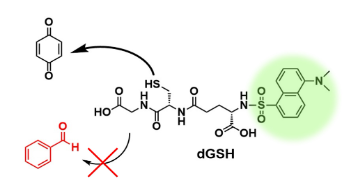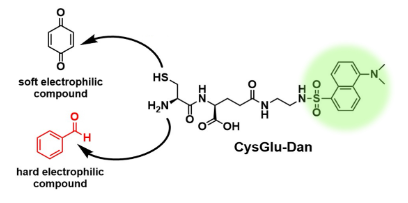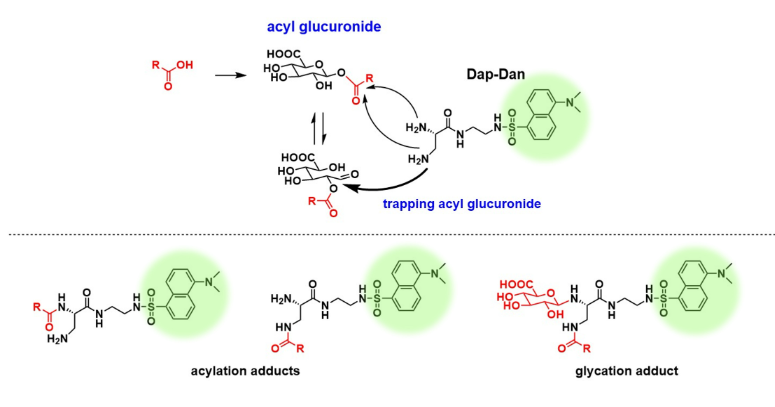CysGlu-Dan, Dap-Dan
Highly reactive metabolites that are generated when a drug is metabolized by enzymes such as cytochrome P450 (CYP) in vivo are called reactive metabolites. Since reactive metabolites form covalent bonds with biomacromolecules including proteins and irreversibly inhibit their function, they may exhibit serious toxicity. In recent drug discovery research, it is required to avoid metabolism-related toxicity and reduce safety risks by conducting a risk assessment of reactive metabolites in an early stage of drug development.
CysGlu-Dan and Dap-Dan are fluorescent trapping agents developed by Professor Tomoyuki Ohe and his team at the Faculty of Pharmacy, Keio University. They can detect and quantify a wide range of reactive metabolites.
CysGlu-Dan
Reactive metabolites that are chemically unstable and highly reactive are difficult to detect directly. Therefore, a simplified approach of reacting them with a trapping agent to trap and detect them by LC/MS, etc. as stable adducts has been adopted by a number of pharmaceutical companies in the initial stage of drug discovery.
Based on the difference in reactivity, reactive metabolites generated during oxidative metabolism by cytochrome P450 (CYP) can be classified into soft and hard electrophilic compounds according to the HSAB principle. Soft reactive metabolites react with soft nucleophilic trapping agents and hard reactive metabolites react with hard nucleophilic trapping agents to form adducts. dGSH (dansyl GSH), a commonly used trapping agent at present, can efficiently trap soft reactive metabolites to enable sensitive detection, but it has the disadvantage that it cannot trap hard reactive metabolites such as aldehydes.
CysGlu-Dan is a novel fluorescent trapping agent developed by Professor Tomoyuki Ohe and his team at the Faculty of Pharmacy, Keio University. It can trap both soft and hard reactive metabolites, enabling the detection and quantification of a wide range of reactive metabolites.


Dap-Dan
In addition to oxidoreductases represented by the above-mentioned cytochrome P450 (CYP), drug metabolizing enzymes also include a group of enzymes that undergo conjugation reactions, such as glucuronide conjugation enzymes. Acyl glucuronides, which are formed by the glucuronide conjugation of a carboxyl group, are known to be reactive metabolites with high reactivity and are thought to exhibit their toxicity by acylating or glycosylating proteins.
Since Dap-Dan has a diamine structure, it forms a stable adduct with an acyl glucuronide. Compared with the conventional trapping agent dansyl-lysine-phenylalanine dipeptide (dKF), it enables highly efficient detection and quantification of acyl glucuronides, which are reactive metabolites of drugs with a carboxyl group.

References
- Shibazaki, C., Ohe, T., Takahashi, K., Nakamura, S. and Mashino, T. : Drug Metab Pharmacokinet., 39, 100386(2021)
- Shibazaki, C., Mashita, O., Takahashi, K., Nakamura, S., Mashino, T. and Ohe, T. : Chem Res Toxicol., 34(11), 2343(2021)
Product List
- Open All
- Close All
For research use or further manufacturing use only. Not for use in diagnostic procedures.
Product content may differ from the actual image due to minor specification changes etc.
If the revision of product standards and packaging standards has been made, there is a case where the actual product specifications and images are different.



